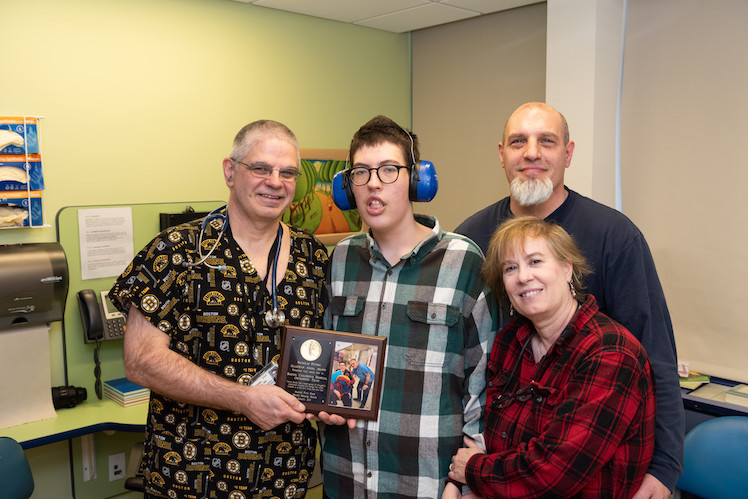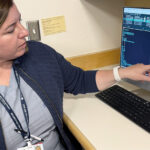A twinkle in his eye: Nurse Michael Felber

After 17-year-old Nicholas Peters had spinal fusion surgery, his nurse, Michael Felber, became an essential person in his recovery.
Nicholas has a range of neurological, endocrinological, behavioral, and orthopedic issues as a result of Prader-Willi syndrome, a rare genetic condition. His condition, months of pain leading up to the surgery, and the hectic hospital environment made Nicholas prone to emotional outbursts that would lead to further distress. Day after day, Felber eased his anxiety. “Every morning, Mike walked into the room with bright, positive energy,” says Nicholas’ mother Lisa. “He was always telling jokes and stories that made Nick laugh. He seemed to know instinctively how to relate to Nick on his level.”
Throughout Nicholas’ hospital stay, Felber worked cooperatively with Lisa to make sure he got the best possible care. “Mike understood that as Nick’s mother, I knew his idiosyncrasies. I knew what would push him over the edge and what would work to keep him calm.” Each morning, after saying hello to Nicholas, Felber and Lisa stepped into the hall to discuss the plan for the day. The two worked together to make sure Nicholas got the care he needed with as little upset as possible. Often, they even had fun.
“Mike has a twinkle in his eye,” says Lisa. “He will always be very near and dear to my heart for the way he cared for Nicholas.”
Between his personality and the kind, compassionate care he provided, Felber earned the nickname, “Mike the nurse” in the Peters family. Later, as Nicholas recovered and returned to his sweet, loving self, the Peters created the Nicholas Peters Guardian Angel Award for Felber and three other members of his care team. Felber’s plaque is engraved, “Heroes Helping Heroes” and features a photo of Nicholas beaming next to his favorite nurse.
Felber’s compassion reaches across borders. As a Global Nursing Fellow, Felber traveled to Colombia three times to care for children in the University Hospital in Neiva and wrote a blog about his experiences.
Related Posts :
-

Ask a sports medicine specialist: Why are ACL tears so common among female athletes?
When an athlete is sprinting after an opponent who suddenly stops or changes direction, their anterior cruciate ligaments (ACLs) make ...
-

Forging a path back to school after orthopedic trauma
Orthopedic trauma can force children to miss school, sometimes for an extended period. But even when patients have regained enough ...
-

“Observe. Be open.”: How Boston Children’s nurses are changing the future of global health
Ashley Birch, MSN, CPNP, a Boston Children’s pediatric nurse practitioner and Global Nursing fellow, didn’t expect a trash ...
-

Jackie’s dreams of playing professional soccer back on track after ACL surgery
From her dorm in Newcastle, England, Jackie Zapata can hear fans roaring in the soccer stadium a few blocks away. ...





